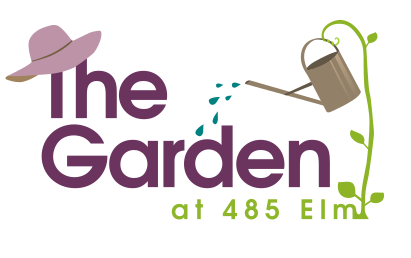Every season, we harvest a sumptuous garlic crop. Half goes home with gardeners. The other half, the very biggest, best heads, we save, dry, and separate into seeds.

The seed dries in an airy, cool environment until just before planting time.
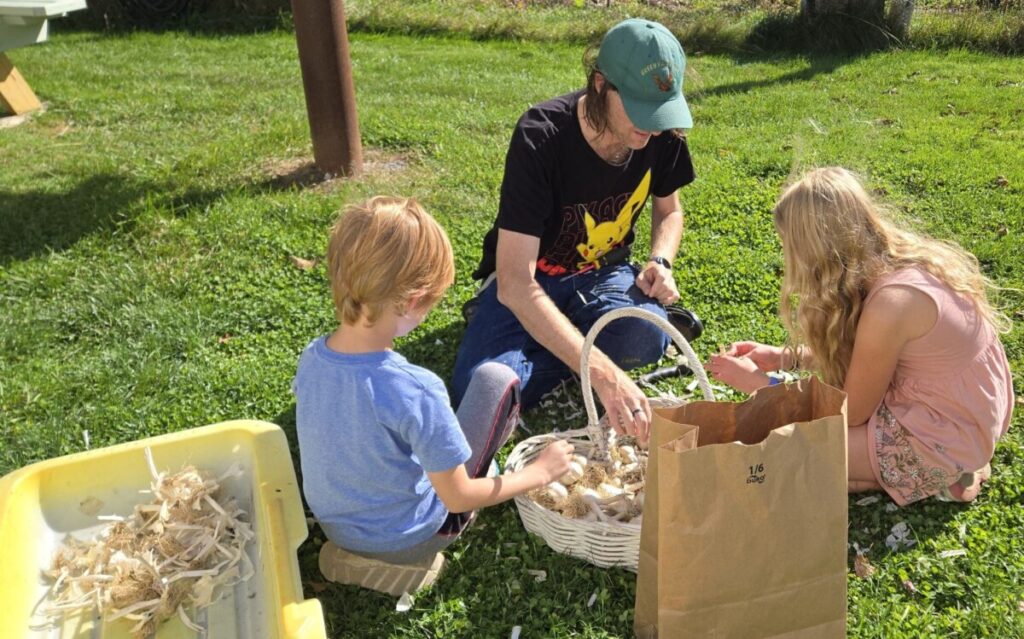
As autumn arrives, gardeners enjoy the relaxing activity of separating the seed garlic heads into cloves. Each garlic clove in a head is a seed, in case you didn’t know!
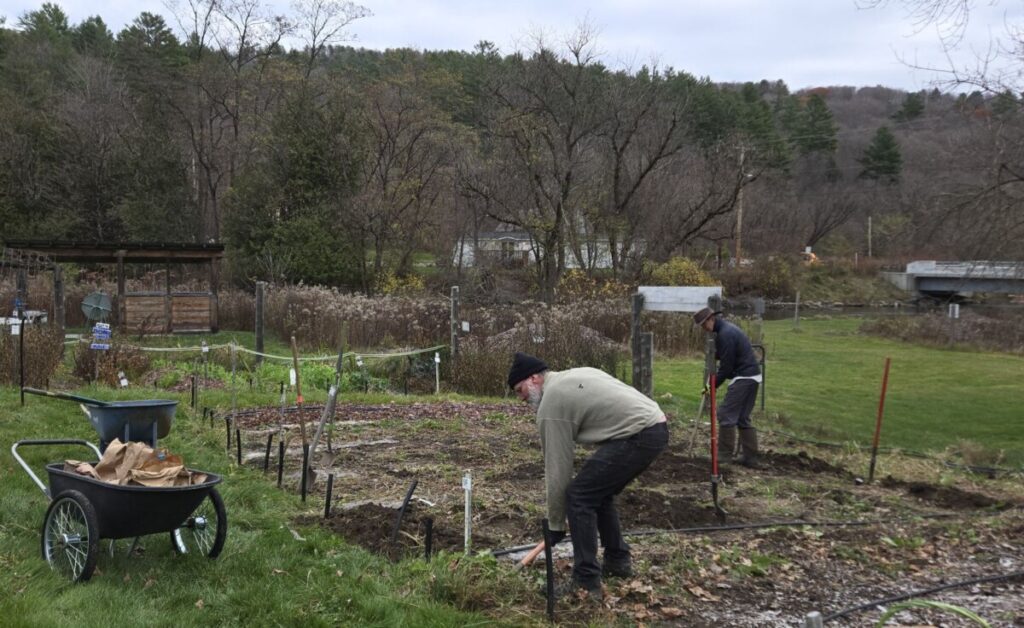
Then it’s planting time. The first two gardeners to arrive prep the garlic bed.
When is garlic planting time? After hard frosts have begun but before the ground freezes. That way, the garlic seeds don’t sprout until spring. Some gardeners plant garlic in the spring. Late-fall planting offers the longest ripening time possible. Besides, spring is the busiest time in the garden. The moment the soil thaws, it’s time to prep beds, plant, and tend everything everywhere all at once (I do love that one).
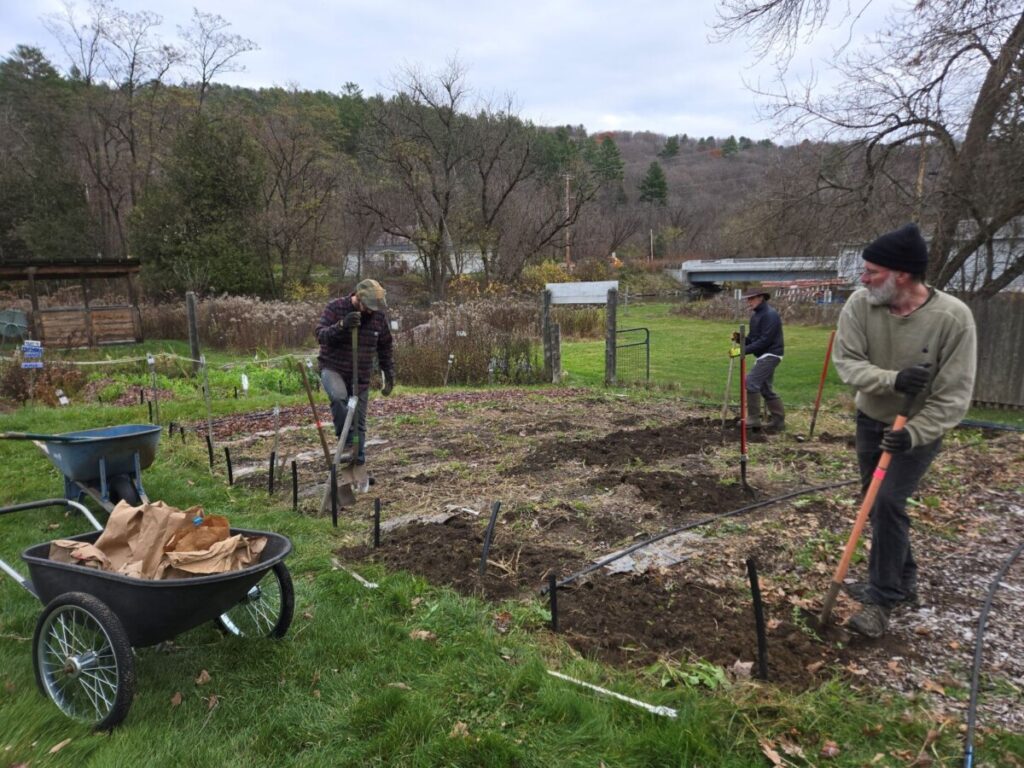
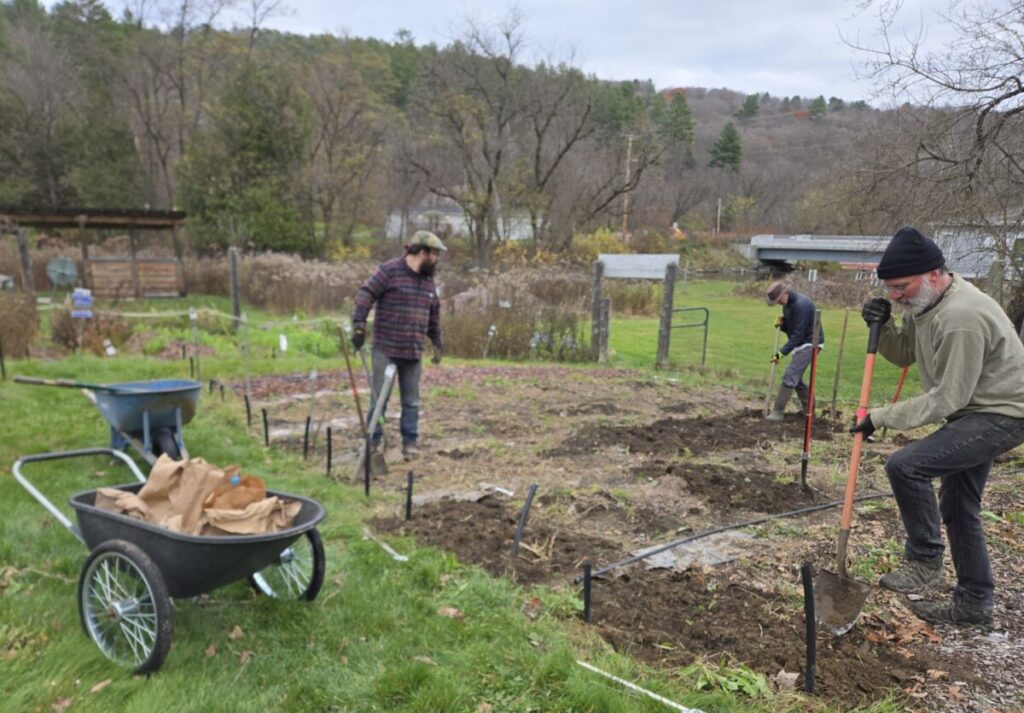

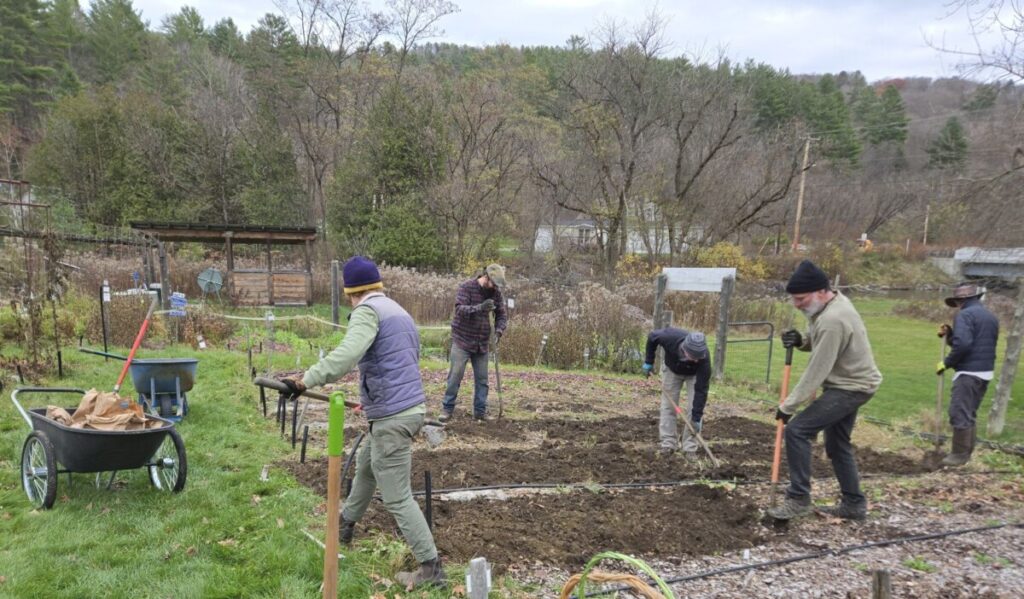

Then there were three gardeners, then four, then five . . . until ten gardeners were turning soil, marking furrows, placing seed, adding compost, raking soil over the seed, and covering it all with several inches of leaf mulch. Suddenly, the pace of progress accelerated.




We plant hard-neck varieties: jell strain, Moreno, and porcelain. We also plant elephant garlic, which is not a true garlic, but closer to a leek, but is milder and delicious, and can be enjoyed just like garlic. The elephant garlic seed stock is low. The seed we had filled only half this row. Next season, instead of distributing it, we’ll dry it all for seed, quadrupling the following season’s crop. (Remember, 1 clove = 1 seed.)
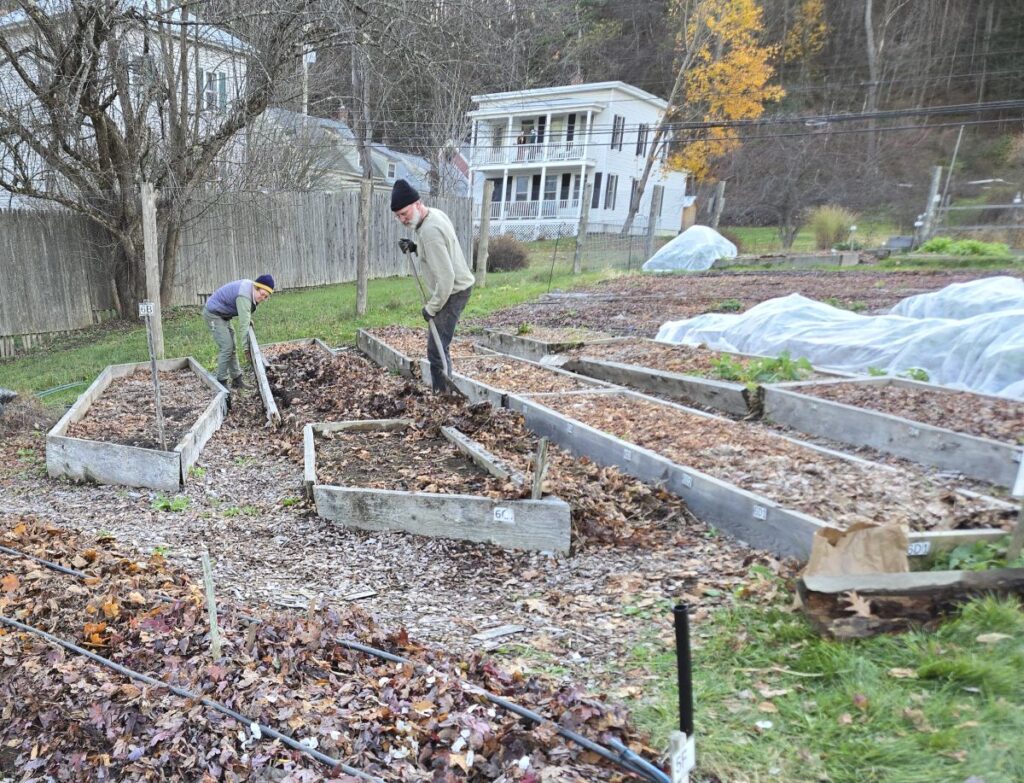
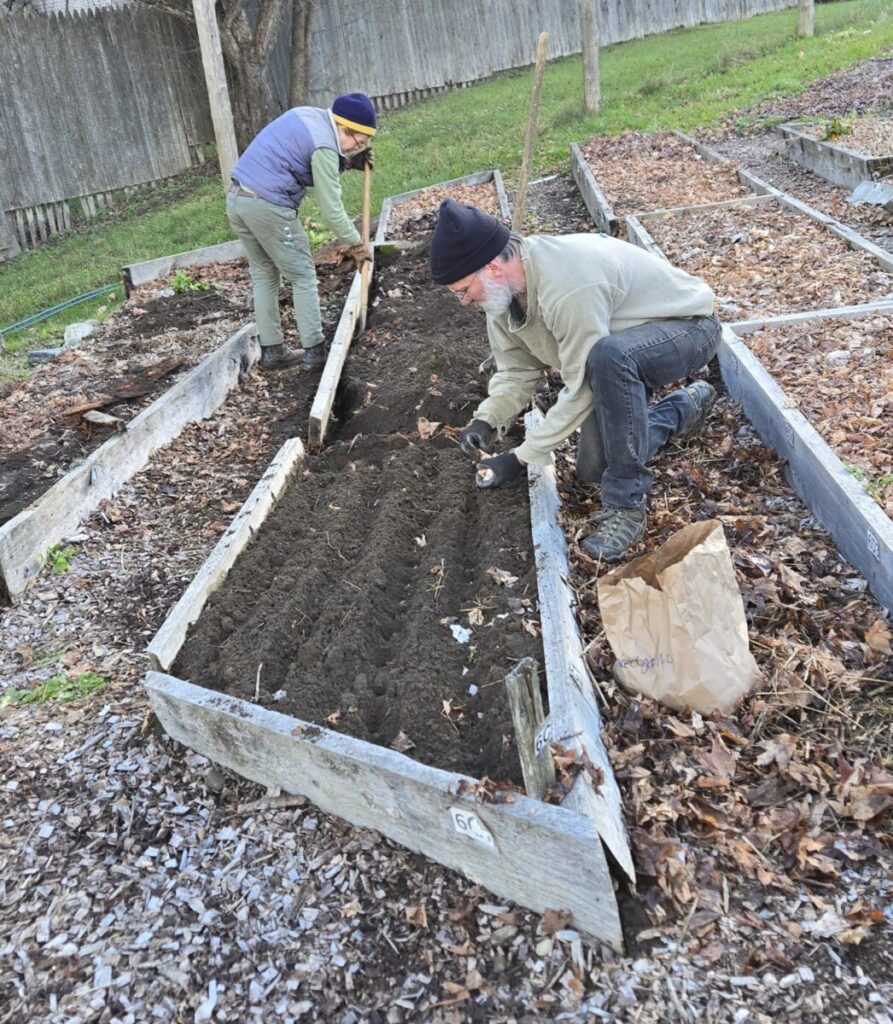
These old raised beds receive the garlic seed that didn’t fit in the ground bed.
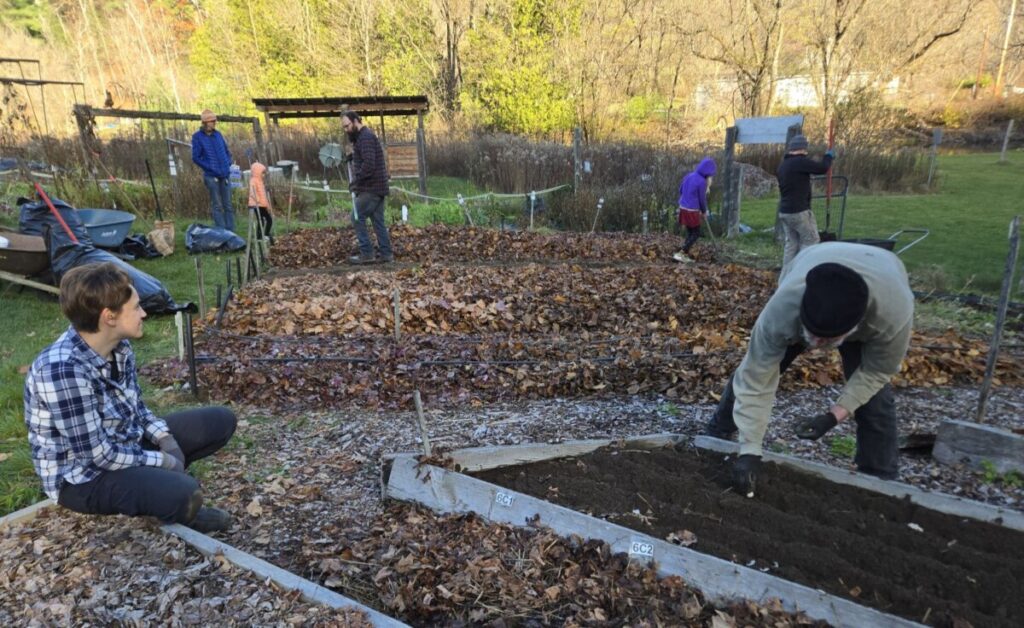
The result of gardeners enjoying a beautiful fall day together: Next season’s garlic awaits.
